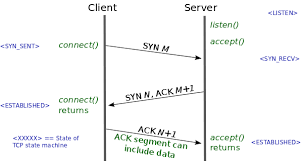Generally protocol refers to a set of rules and regulations to perform certain task. As we know, we create websites using HTML which is “Hyper Text markup Language”. Thus to transfer this web resource we use HTTP protocol in internet.
HTTP stands for ” Hyper Text Transfer Protocol“. In web resource we use protocol to send or receive any request and response from the server. It can made secure and termed as HTTPS after having SSL.
Characteristics of HTTP
HTTP protocol is a stateless protocol. When a client searches something in web browser. The request will go on for server and thus server receive a request from clients. Now the client forget about its request and its server duty to give response back to client. Because of this, its called as Stateless.
Its a connectionless protocol. When a request from client and response from server for that request happened successfully. The client and server forget about their previous action.
Its media independent. This protocol helps to transfer any media type like audio, video, gif. As long as both client and server side are equipped to handle those media file.
Evolution of protocol
HTTP/0.9
Its a one-line protocol. Its very user friendly and simply have client-server architecture. It only supports GET method in websites. In response, only hypertext is returned back.
HTTP/1.0
HTTP/1.0 has extensibility in building. Its upgraded version of before by providing metadata which include its version, content type, status code.
It also has some methods like GET, POST, HEAD. It also didn’t limit it by having only hypertext, whereas it allows script, style sheets, media as well.
HTTP/1.1
Its a standardized protocol which most commonly used. The key features like pipelining, virtual hosting included in this version. This helps for faster response and great bandwidth.
It supports methods like GET, POST, HEAD, PUT, DELETE, TRACE, OPTION which makes the connection between clients and server easy, dynamic and apt for modern day web work.
keep-alive header is used for long connection between and client and server. Also it helps to add timeout and max request per connections which make way more easier.
In upgrade protocol, timeout and max wouldn’t present whereas it uses a default timeouts and max or it will provide enhanced protocol like web sockets.
HTTPS – the secured form of HTTP protocol introduced for doing critical web application especially with special and specific web information like credit card details.
HTTP/2.0
Though we use all of above mentioned features. The modern web applications require new protocol like HTTP/2.0, web sockets, server side engine to flourish a good connections.





